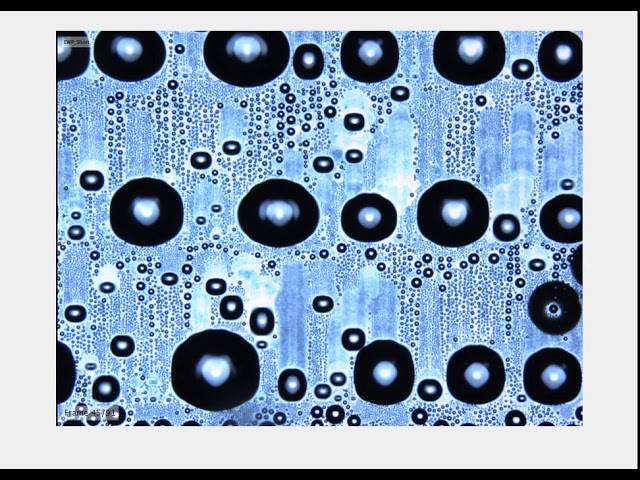Researchers of the department of Physics of Complex Fluids of the University of Twente’s MESA+ institute have succeeded in increasing the effectivity of condensation through gravity-driven electrowetting. “We have been able to increase condensation by fifty per cent, with room for further increase”, researchers say. Higher efficiency can be in particular interesting for heat transfer and fog harvesting – fetching water from the atmosphere.
In their article, which has been published in the scientific journal Applied Physics Letters this week, the researchers show how they can gain better control over the motion of the little droplets by using a cleverly constructed pattern of electrodes. Tiny droplet will grow faster towards a droplet that has enough mass for gravity to get a grip on. That in turn, will lead to accelerated condensation.
Electrowetting
Electrowetting is the manipulation of small quantities of liquids on a surface with the help of electrical voltage. Because of the voltage, the fluids are to be manipulated in shape and position, leading to new applications. A clear example is a fluid lens which can be used in mobile phones or camera system. As a result of the electrical voltage, the form is manipulated in such a way that it enables the lens to focus or zoom in and out.
There are numerous applications for electrowetting, including lab-on-a-chip devices and new types of electronic displays. Also, it can now be used for fog harvesting or in micro-cooling systems, as they become more powerful and more efficient by the process of electrowetting.
Application-driven
Prof.dr. Frieder Mugele, who is a professor in Physics of Complex Fluids at the University of Twente: “We hope that these results will be the first step towards new research in the application of electrically controlled condensation.” According to the researchers, it would be particularly interesting to exploring the limits of increasing condensation and transferring that to application in practice. “In the current setting, we have been able to realize fifty per cent increased condensation, further research can lead to a much higher percentage. To what extend an increase is possible, is hard to predict.”
Full details of the publication: Ranabir Dey, Jander Gilbers, Davood Baratian, Harmen Hoek, Dirk van den Ende, and Frieder Mugele; Controlling shedding characteristics of condensate drops using electrowetting; Appl. Phys. Lett. 113, 243703 (2018); https://doi.org/10.1063/1.5064363






